What are the best Premier League stadiums for success and fan value?
 Kenilworth Road became the 61st Premier League stadium when Luton Town won promotion to the 2023-24 Premier League. Within the walls of those 61 stadiums across England and Wales, fans of 51 clubs celebrated successes and shared losses. New stadiums were constructed, extra seating and hospitality boxes were added, and ticket prices rose to new highs.
Kenilworth Road became the 61st Premier League stadium when Luton Town won promotion to the 2023-24 Premier League. Within the walls of those 61 stadiums across England and Wales, fans of 51 clubs celebrated successes and shared losses. New stadiums were constructed, extra seating and hospitality boxes were added, and ticket prices rose to new highs.
Across all those seasons, what are really the best Premier League stadiums? Which fans experience the most on-field successes at their home ground? And which owners have received the best return on investment with their (new) stadium?
New stadiums added over the years
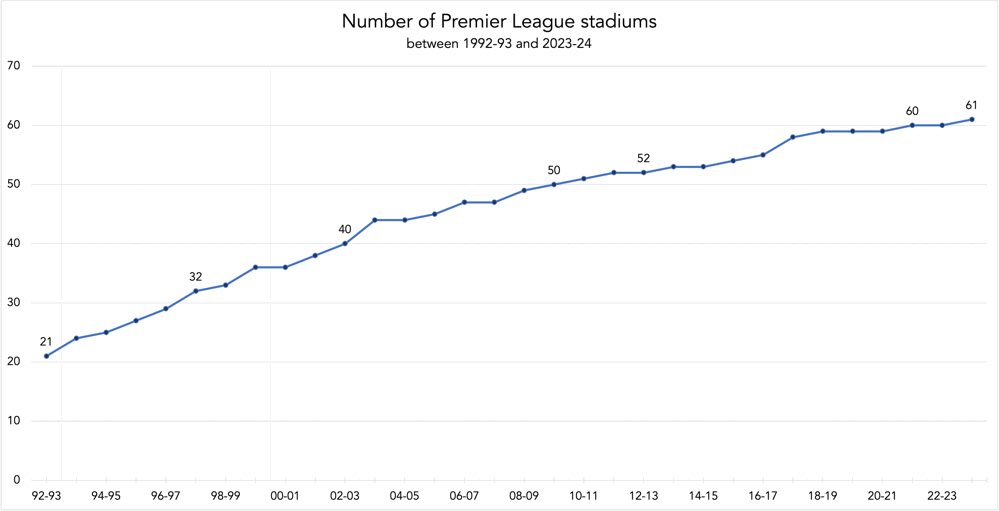
The total number of Premier League stadiums has increased 2.9 times compared to the 21 stadiums in which matches were held during the inaugural 1992-93 Premier League season. Over the years, promotion to the highest division added 29 new grounds, while 11 new (or temporary) stadiums joined. There have been 10 teams who played at two different stadiums. While Tottenham Hotspur is the only team to have played their Premier League home games at three different venues.
The Spurs started out at White Hart Lane. While construction on their estimated £1 billion stadium took place, they played their 2017-18 (19) and 2018-19 (14) home matches at Wembley. The final five home games of 2018-19 took place at the Tottenham Hotspur Stadium, the second newest Premier League stadium behind Brentford’s Gtech Community Stadium.
Two stadiums, Selhurst Park and Loftus Road, were the home ground for not one, but two Premier League sides. Crystal Palace has played at Selhurst Park since 1924. While former club Wimbledon played there during their eight Premier League seasons (between 1992-93 and 1999-2000).
Loftus Road is QPR’s home ground, but during the 2002-03 and 2003-04 seasons Fulham used the facilities while Craven Cottage went through safety reconstructions.
Premier League stadiums since 1992-93
| What | Number |
|---|---|
| Stadiums played at | 61 |
| Clubs in Premier League | 51 |
| Clubs having played at 3 stadiums | 1 – Tottenham Hotspur |
| Clubs having played at 2 stadiums | 10 |
| Stadiums used by more than 1 club | 2 – Selhurst Park & Loftus Road |
Stadiums which have seen the most Premier League action
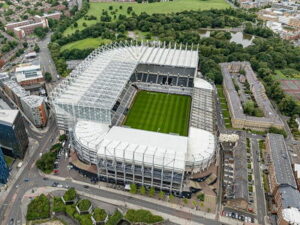
Arne Müseler / www.arne-mueseler.com, CC BY-SA 3.0 DE, via Wikimedia Commons
Between 1992-93 and 2022-23, six out of 60 (excluding Luton Town’s Kenilworth Road) Premier League stadiums have held over 500 matches. This includes the stadiums of Premier League mainstays Chelsea, Everton, Liverpool, and Manchester United. Fans of these four clubs could have attended 595 Premier League matches at their home stadium until the start of the 2023-24 campaign.
Villa Park (Aston Villa) and St. James’ Park (Newcastle United) are the only other two stadiums in the 500-club, with respectively 538 and 536 Premier League matches taking place at those grounds during that time.
White Hart Lane hosted 481 Spurs home matches across 25 Premier League seasons before the stadium was demolished. While Selhurst Park hosted 428 Premier League matches until the start of the 2023-24 season, including 270 matches from Crystal Palace and 158 from Wimbledon.
Stadiums with most Premier League action between 1992-93 and 2022-23
| Stadium – club | Number of matches (seasons) |
|---|---|
| Anfield – Liverpool
Goodison Park – Everton Old Trafford – Manchester United Stamford Bridge – Chelsea |
595 matches (31 seasons) |
| Villa Park – Aston Villa | 538 matches (28 seasons) |
| St. James’ Park – Newcastle United | 536 matches (28 seasons) |
| White Hart Lane – Tottenham Hotspur* | 481 matches (25 seasons) |
| Selhurst Park – Crystal Palace & Wimbledon* | 428 matches (CP: 270 matches, 14 seasons & WI: 158 matches, 8 seasons) |
| *No longer the club’s home ground. | |
There are also seven stadiums who hosted only one Premier League season (19 or 21 matches). Three clubs – Barnsley, Blackpool, and Swindon Town – were only active in the Premier League for one season.
While the clubs playing in the other four stadiums – Bolton Wanderers, Derby County, Middlesbrough, and Sunderland – all moved to another venue after one Premier League season.
Title winning seasons
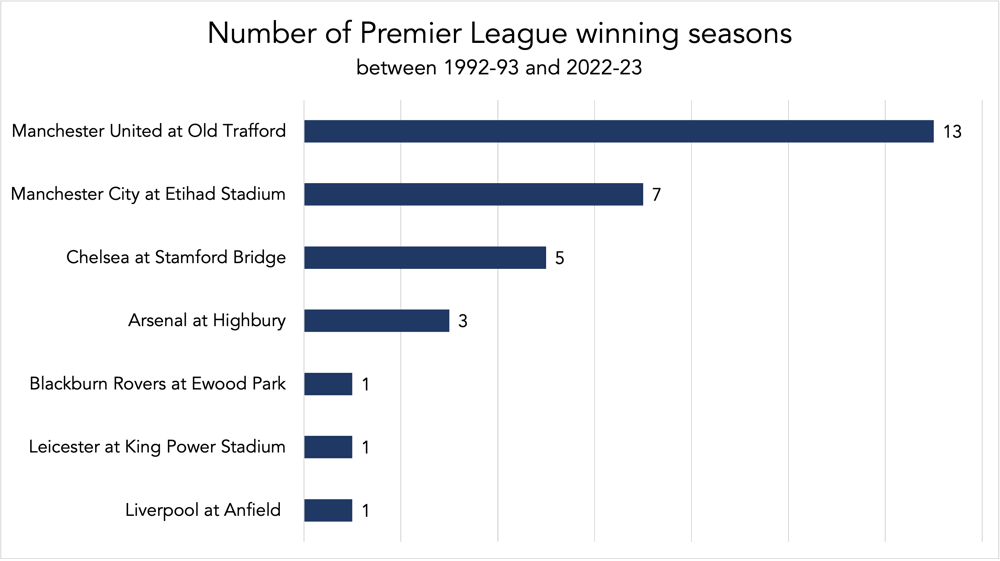
Only seven clubs have won the Premier League in the 31 seasons between 1992-93 and 2022-23. Manchester United won 13 titles, making Old Trafford the ground with the most Premier League winning seasons. The Etihad Stadium, home to Manchester City since the 2003-04 season, hosted seven title winning seasons.
While Stamford Bridge (five Chelsea titles) and Highbury (three Arsenal titles) also contributed to more than one title. Anfield (Liverpool), the King Power Stadium (Leicester City) and Ewood Park (Blackburn Rovers) are the only other three stadiums with a title-winning season.
Home record leading to title
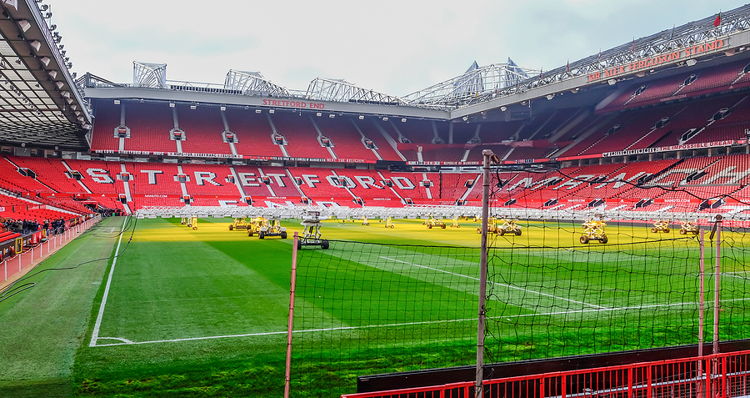
A good home record goes a long way towards the title. From the champions, 77 percent also ranked best at home. During United’s 13 titles, nine times they also had the best seasonal home record.
Only seven times did a team, not topping the home table, win the title. With Arsenal being crowned champion whilst ranking third (the worst) based on their home results at Highbury in 2001-02.
The best home record does not necessarily imply the title either. Newcastle United, for example, was the best at home in 1995-96 and 1996-97. However, the Magpies are yet to be crowned Premier League champions with their highest away-rank being third.
Despite achieving the best home performances, Arsenal (1998-99 and 2000-01 at Highbury), Liverpool (2001-02 and 2021-22 at Anfield), and Tottenham Hotspur (2016-17 at White Hart Lane) also lost out on the title.
United at Old Trafford with the most wins and least defeats
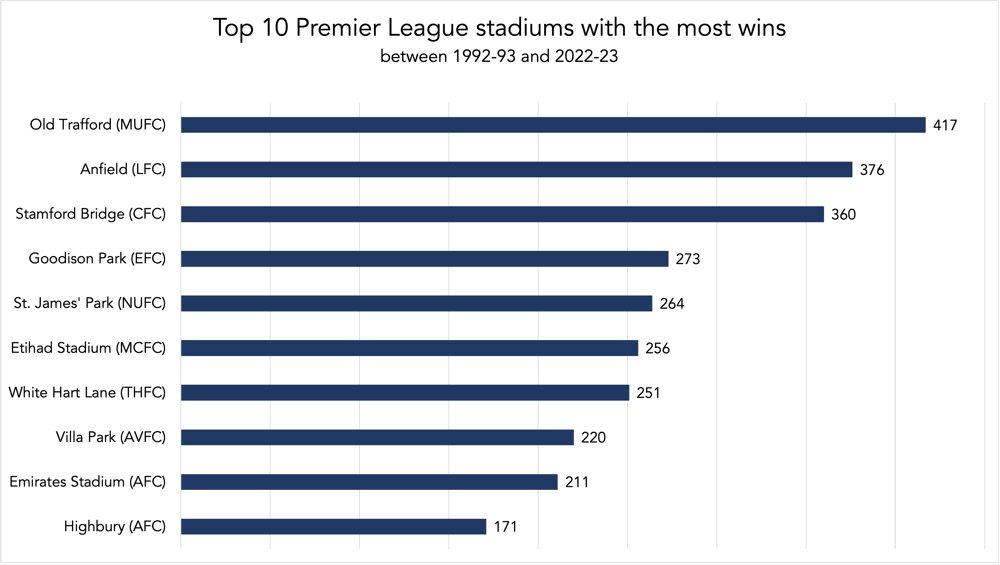
17 grounds have seen their club(s) have over a century of Premier League wins between 1992-93 and 2022-23 (including Selhurst Park with Crystal Palace and Wimbledon). At Old Trafford, Manchester United registered 417 wins during that period. Liverpool won 376 times in front of their fans at Anfield, while the Blues won 360 Premier League matches at Stamford Bridge.
With a 70 percent win rate at home between 1992-93 and 2022-23, Manchester United at Old Trafford is relatively also the best team. City at the Etihad and the Spurs at Wembley follow with a 67 percent win rate. While Arsenal at the Emirates (65 percent) and Liverpool at Anfield (63 percent) complete the top five.
The two lowest win rates at home during that period for clubs now (2023-24) competing in the Premier League are from Crystal Palace at Selhurst Park (31 percent) and Brighton at the Amex Stadium (32 percent).
Top 5 clubs with highest percentage of home matches won between 1992-93 and 2022-23
| Club and stadium | Percentage of home matches won |
|---|---|
| Manchester United at Old Trafford | 70% |
| Manchester City at Etihad Stadium | 67% |
| Tottenham Hotspur at Wembley | 67% |
| Arsenal at Emirates Stadium | 65% |
| Liverpool at Anfield | 63% |
United have, with 11 percent, also the least number of losses (65) relative to the total number of home matches played at Old Trafford during that time.
Liverpool only lost 13 percent of their matches at Anfield. The same percentage as Arsenal achieved during their 14 seasons at Highbury. At the Emirates, the Gunners have lost 14 percent of their home matches, the same as Chelsea has at Stamford Bridge. While City has lost 17 percent of their matches at the Etihad Stadium since 2003-04.
Top 5 clubs with lowest percentage of home matches lost between 1992-93 and 2022-23
| Club and stadium | Percentage of home matches lost |
|---|---|
| Manchester United at Old Trafford | 11% |
| Arsenal at Highbury | 13% |
| Liverpool at Anfield | 13% |
| Arsenal at Emirates Stadium | 14% |
| Chelsea at Stamford Bridge | 14% |
Clubs collecting the highest percentage of home points

At 23 stadiums the home team collected at least half of the possible points between 1992-93 and 2022-23. Manchester United collected 76 percent of the possible home points (1,364 points in 595 matches) at Old Trafford. The highest percentage of any club. Manchester City follows by collecting 73 percent of the home points (829 points in 380 matches) at the Etihad Stadium. A difference of 29 percent points compared to the 44 percent of points the Citizens collected during the 120 Premier League matches at their former stadium Maine Road.
Like City, Arsenal also moved to a new stadium. However, the Gunners collected a similar percentage of home points during their stay at Highbury (71 percent) as they have attained at the Emirates Stadium (72 percent). Tottenham Hotspur and Liverpool collected respectively 72 and 71 percent at (temporary stadium) Wembley and Anfield.
Fulham is the only non-Big Six team to make it to the top 10 of best home record based on the percentage of points collected from the points up for grabs at home. The Cottagers collected 59 percent of the possible home points during their two-season stay at Loftus Road. 11 percent points more than the 48 percent they have collected at their true home ground, Craven Cottage, throughout their Premier League years.
Stadiums where the most goals have been scored

Manchester United at Old Trafford (1,250), Liverpool at Anfield (1,202) and Chelsea at Stamford Bridge (1,141) are the only three clubs to have scored over 1,100 goals at home between 1992-93 and 2022-23.
In relative terms, it is City that leads the way at the Etihad Stadium with 2.26 goals per Premier League match. It is one of only four stadiums with an average of over 2 home goals scored per league match between 1992-93 and 2022-23. United comes second with 2.1 goals per match at Old Trafford. While Arsenal at the Emirates and Liverpool at Anfield have scored respectively 2.07 and 2.02 goals per home match.
Highest average goals per home match between 1992-93 and 2022-23
| Club and stadium | Goals for per match |
|---|---|
| Manchester City at Etihad Stadium | 2.26 |
| Manchester United at Old Trafford | 2.10 |
| Arsenal at Emirates Stadium | 2.07 |
| Liverpool at Anfield | 2.02 |
| Arsenal at Highbury | 1.98 |
The John Smith’s Stadium saw the lowest average number of Premier League home goals so far. During Huddersfield Town’s two Premier League seasons, they scored an average of 0.68 goals per match. For clubs with over 150 Premier League matches, Burnley is the lowest scoring team at their home ground.
The Clarets scored just 1.06 goals per match. Slightly lower than the average of 1.08 goals per match Crystal Palace managed in 270 matches at Selhurst Park.
Most goals in a season
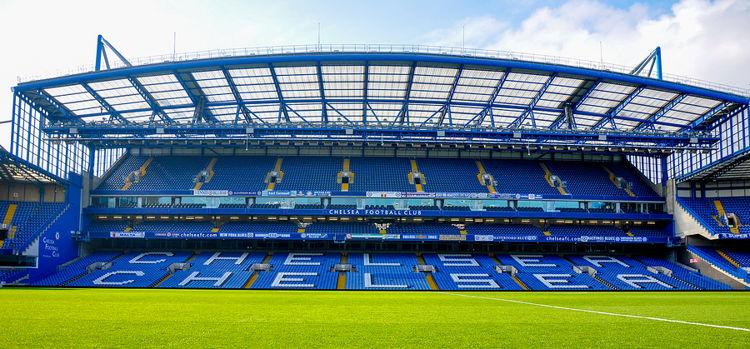
Chelsea fans have seen the most home goals scored in one season, when Chelsea scored 68 out of their 103 total number of goals at Stamford Bridge in 2009-10.
The second-best home tally is 63 by City at the Etihad during the 2013-14 season. Seven of the ten highest number of goals during a season are currently for City.
Top 5 most goals scored at home during a season between 1992-93 and 2022-23
| Number of goals | Season | Club | Stadium |
|---|---|---|---|
| 68 | 2009-10 | Chelsea | Stamford Bridge |
| 63 | 2013-14 | Manchester City | Etihad Stadium |
| 61 | 2017-18 | Manchester City | Etihad Stadium |
| 60 | 2022-23 | Manchester City | Etihad Stadium |
| 59 | 1999-00 | Manchester United | Old Trafford |
The fortresses of the Premier League
 To have success, the number of goals a club concedes is just as important. United has conceded just 0.74 goals per match at Old Trafford between 1992-93 and 2022-23. The Red Devils conceded just four goals in 1994-95 at home, the least number of goals conceded at home during a Premier League season so far.
To have success, the number of goals a club concedes is just as important. United has conceded just 0.74 goals per match at Old Trafford between 1992-93 and 2022-23. The Red Devils conceded just four goals in 1994-95 at home, the least number of goals conceded at home during a Premier League season so far.
Liverpool conceded slightly more with 0.80 goals per match during all those Premier League years. Arsenal at Highbury comes in third with 0.83 goals conceded per home match. Which is marginally better than the 0.89 goals the Gunners concede on average at the Emirates Stadium, as the difference comes down to around one goal per season.
Sunderland at Roker Park is the only non-Big Six teams to have conceded less than one goal per match. The Black Cats only played at the ground during the 1996-97 season before moving to the Stadium of Light.
Liverpool and Chelsea with the most undefeated seasons

On 18 occasions, clubs were undefeated at home during a season. While this happened only three times away from home. Liverpool (at Anfield) and Chelsea (at Stamford Bridge) both achieved five invincible seasons at home. For the Reds this resulted only once in a title.
United achieved three undefeated seasons at Old Trafford. The same number as Arsenal, but the Gunners achieved this twice at Highbury and once at the Emirates. During the 2003-04 season, Arsenal remained undefeated both at and away from Highbury.
Avoiding relegation through home results

Apart from success at the top, a stadium can also help a club avoid relegation. Between 1992-93 and 2022-23, there have been 35 times that a club stayed in the Premier League based on their home results, while they would have been relegated based on their away rank. During the 1992-93 and 2010-11 seasons, the three clubs that would have been relegated on away results, all stayed up because of their performances at their home ground.
Southampton achieved this feat four times. In 1992-93, 1995-96, and 1998-99 they achieved this at The Dell, while their results at St. Mary’s Stadium kept them up in 2020-21.
Everton’s results at Goodison Park avoided them from relegating during three seasons: 1994-95, 2003-04, and 2021-22. Six other teams achieved this twice.
From the Big Six, only Chelsea’s and Tottenham’s results at Stamford Bridge (1993-94) and White Hart Lane (2000-01) off-set a relegation form away from home.
Clubs that most often avoided relegation due to home performance between 1992-93 and 2022-23
| Number of times | Club | Stadium (season) |
|---|---|---|
| 4 | Southampton | The Dell (1992-93, 1995-96, and 1998-99)
St. Mary’s Stadium (2020-21) |
| 3 | Everton | Goodison Park (1994-95, 2003-04, and 2021-22) |
Largest Premier League stadiums
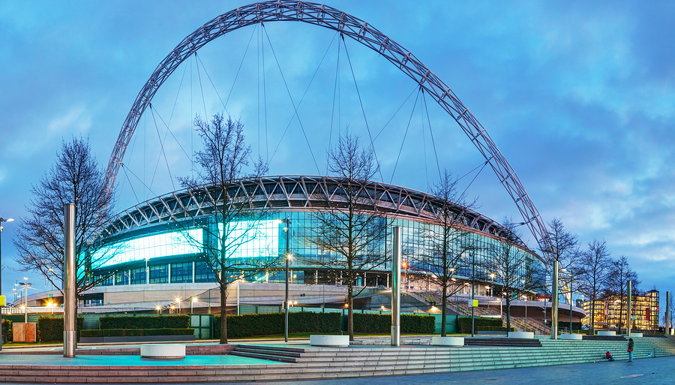
Of the 61 stadiums used in the Premier League, Wembley has the highest capacity with 90,000. It was Spurs who played at the stadium in 2017-18 and the majority of 2018-19 as their new stadium was constructed on the same site as where White Hart Lane used to stand.
The second biggest stadium is Old Trafford, which currently has a capacity of 74,310. Followed by the new Spurs stadium with a capacity of 62,850, which is slightly higher than the London Stadium (capacity: 62,500). West Ham moved into the latter in 2016-17, after the stadium built for the 2012 Olympics was converted. It is one of four London stadiums in the top 10 of largest Premier League stadiums.
The latest addition, Kenilworth Road, is over seven times smaller than Old Trafford. With 10,356 it has just under 1,000 less spots than the second smallest ground, Bournemouth’s Vitality Stadium (11,307).
Top 10 all-time Premier League stadiums with highest capacity as of 2023-2024
| Stadium | Capacity | Club |
|---|---|---|
| Wembley | 90,000 | Tottenham Hotspur |
| Old Trafford | 74,310 | Manchester United |
| Tottenham Hotspur Stadium | 62,850 | Tottenham Hotspur |
| London Stadium | 62,500 | West Ham United |
| Emirates Stadium | 60,704 | Arsenal |
| Etihad Stadium | 53,400 | Manchester City |
| Anfield | 53,394 | Liverpool |
| St. James’ Park | 52,305 | Newcastle United |
| Stadium Of Light | 48,707 | Sunderland |
| Villa Park | 42,530 | Aston Villa |
Changing capacity since 1992-93
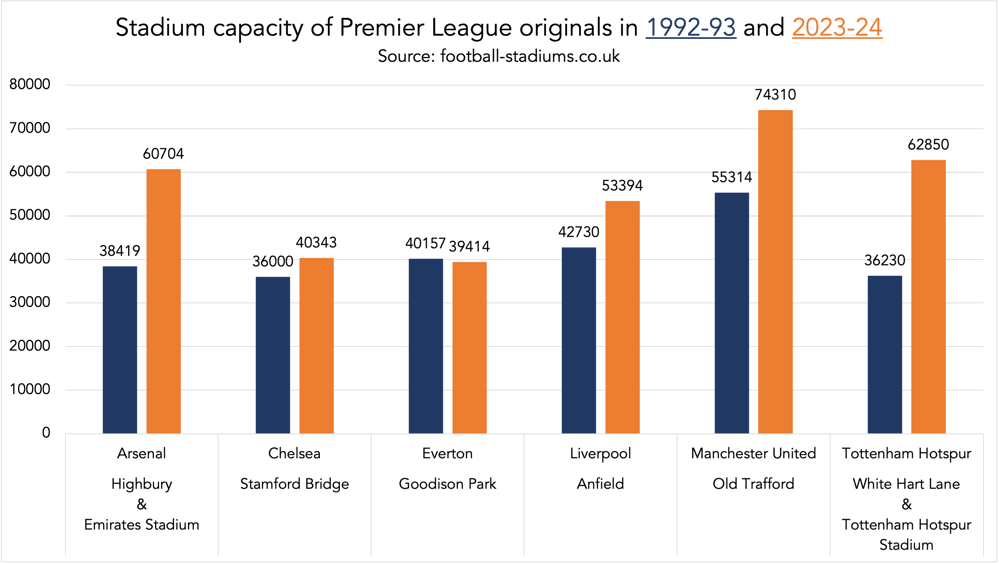
Throughout the years capacity has changed for many stadiums. Safety concerns limited the number of spectators, while redevelopments have increased it. Old Trafford’s capacity, for example, has increased by 34 percent compared to the 55,314-capacity in 1992-93. Stamford Bridge added over 4,300 places (increase of 12 percent) during that period.
While Anfield went from 42,730 to 53,394. However, Anfield is currently undergoing new redevelopments to increase the stadium’s capacity to over 61,000.
Chelsea, United, and Liverpool are three of six teams (together with Everton, Arsenal, and Tottenham) to have competed in every Premier League season so far. They remained at the same stadium. Arsenal and Tottenham moved to a new stadium. The Gunners increased their capacity with 58 percent since 1992-93. While the Tottenham Hotspur Stadium has a capacity 1.7 times larger than White Hart Lane had in 1992-93.
Everton has remained at Goodison Park, and the ground’s capacity has slightly decreased since the inaugural Premier League season (from 40,157 to 39,414). However, the Toffees are in their final seasons at Goodison Park. Their new £500 million, 52,888 capacity stadium at Bramley-Moore Dock is planned to be completed in late 2024.
Stadium capacity vs success
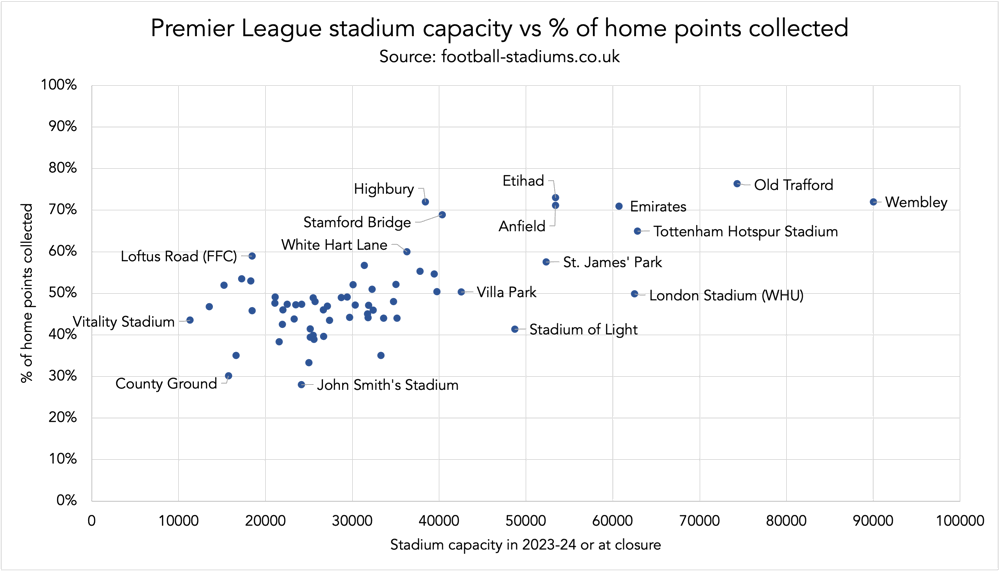
The Big Six have stadiums with some of the largest capacities. They also generally tend to collect more points at home than other clubs. And while Arsenal, City, and the Spurs collected relatively more points once they moved to a bigger stadium, stadium capacity does not necessarily lead to more home points.
West Ham, for example, wins two percent points less points at home than at their previous stadium Boleyn Ground (50 vs 52 percent). Despite capacity increasing by over 75 percent. While Sunderland collected only 41 percent of the home points up for grabs at the Stadium of Light. Less than they did at their previous, and smaller, ground Roker Park.
Return on stadium investments
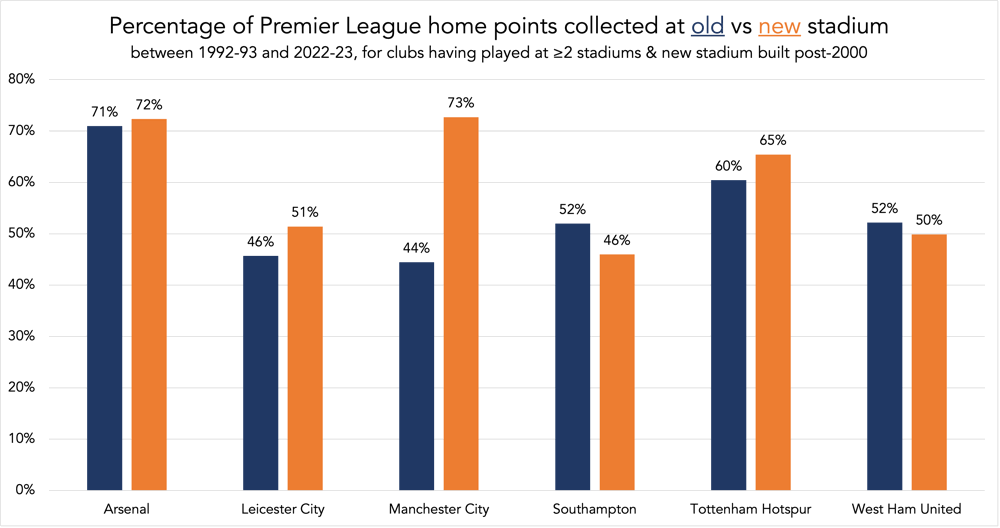
Six clubs moved to a new stadium after 2000 and have played their Premier League matches at, at least two different grounds. Manchester City’s results at the Etihad increased their percentage of home points collected to 73 percent compared to the 44 percent they collected during their time at Maine Road. Capacity increased by over 50 percent, increasing matchday revenue. Built for the 2002 Commonwealth Games, and then turned into a football stadium, investments were estimated at £112 million. A new expansion to the stadium, increasing the capacity to almost 62,000 seats, and the creation of a new fan zone will cost around £300 million. The project has been approved and is set to be completed by August 2025.
The Tottenham Hotspur Stadium reportedly cost around £1 billion. So far, the Spurs collect five percent points more at home than at White Hart Lane. Arsenal and Leicester City also collected a higher percentage of home points at their new stadiums. The Emirates reportedly cost £390 million, while the King Power Stadium was with £37 million, over 10 times more economical to construct.
Southampton and West Ham collected relatively less points at their new stadiums. St. Mary’s Stadium cost around £32 million. While West Ham rents the London Stadium that had initial construction costs of £486 million and further redevelopment costs of £323 million.
How much success did fans witness for what they paid?
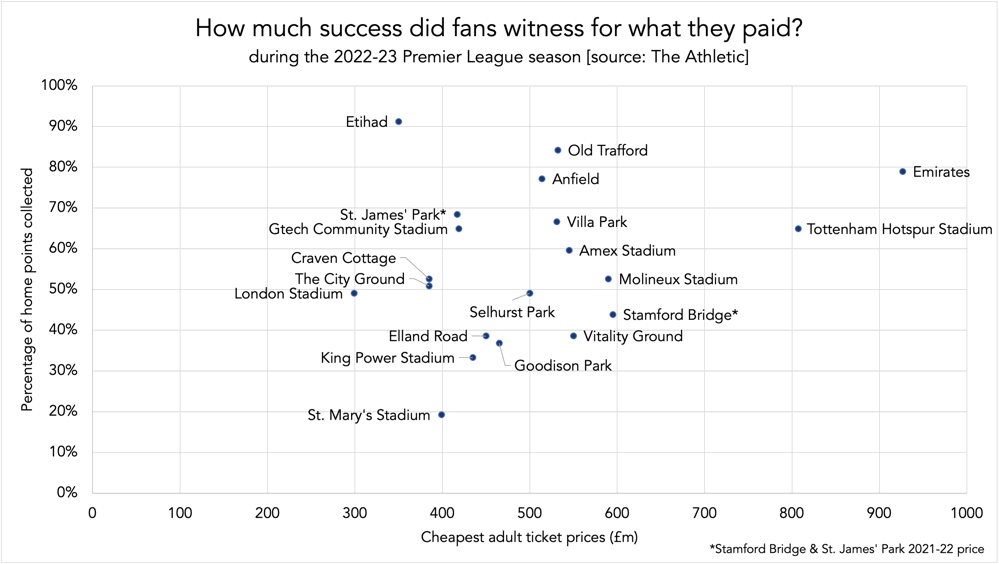
For fans, ticket prices relative to the amount of success witnessed is also important. Season ticket prices have significantly risen since 1992-93, and not without controversy.
In 2022-23, the cheapest season tickets at football temples Old Trafford and Anfield were £532 and £514 respectively. United and Liverpool fans did receive on-field success for their money. As they saw their teams collect over three quarters of the possible home points (MUFC: 84 percent and Liverpool: 77 percent).
City collected 91 percent of the possible home points while having the second cheapest season tickets (most economical option). Arsenal collected 79 percent of their home points, yet their cheapest season tickets were priced at £926.5, the highest of all 20 sides.
West Ham had the cheapest season tickets (£299) available, but the Hammers collected just 49 percent of the home points up for grabs.
The best stadium…
 In Premier League history, it is Old Trafford that scores well across multiple indicators of success. As do many of the other Big Six clubs. For some moving to a new stadium increased capacity, and probably matchday revenue, but had little impact on success.
In Premier League history, it is Old Trafford that scores well across multiple indicators of success. As do many of the other Big Six clubs. For some moving to a new stadium increased capacity, and probably matchday revenue, but had little impact on success.
The successes of Manchester City did coincide with their move to a new stadium. However, the owners invested heavily in all parts of the organisation, not just the infrastructure. Irrespective of success, and maybe even ticket prices, at the end of the day, the best Premier League stadium in the eyes of a fan, is that of their own team.



